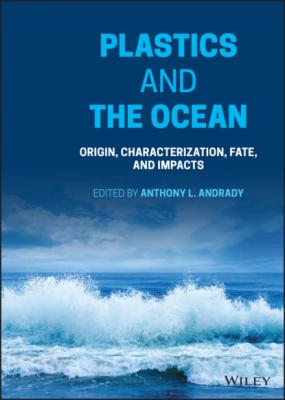Plastics and the Ocean. Группа авторов
Читать онлайн.| Название | Plastics and the Ocean |
|---|---|
| Автор произведения | Группа авторов |
| Жанр | Химия |
| Серия | |
| Издательство | Химия |
| Год выпуска | 0 |
| isbn | 9781119768418 |
2.2.9 Fillers and Reinforcements
Fillers are relatively cheap, solid substances that are added to plastic formulations in high percentages to adjust volume, weight, and mechanical performance (Zweifel et al. 2001). Inert fillers often do not compromise the functional properties of the plastic; they are cheaper than resin and can significantly reduce the cost of the formulation. Fillers can also serve as reinforcing agents that improve the mechanical performance and durability of the plastic. They are used as powders, fibers, or nanotubes.
Filler consumption globally in 1999 was 66% calcium carbonate, 6% talc, 6% clays, 3% wollastonite (CaSiO3), and the remaining 19% included silica, glass, asbestos, alumina, rutile, CB, and carbon nanotubes (CNTs; Civancik‐Uslu et al. 2018; Zweifel et al. 2001). Reinforcements are generally strong fibers including glass, carbon, or aramide fibers (Alam et al. 2019; Hansen et al. 2013). Fillers and reinforcements are used virtually in all polymers, but the largest fraction (i.e. over 90%) is used primarily in rubbers, PVC, and polyolefins. The improved mechanical properties in a filled plastic are derived from the interface layer between the polymer and the filler. The stronger the interfacial interactions, the better the mechanical performance of the composite (i.e. polymer/filler mix). The efficacy of the filler is also dependent on adequate dispersion in the polymer matrix. Good dispersion is achieved through extrusion, dispersing agents, or by surface treatment of the filler to improve compatibility with the polymer matrix.
Fillers can be microscopic (1 μm) or macroscopic (<100 μm) in size and have a very low propensity to leach out of the plastic. However, degradation and wear of a filled plastic can release fibers into surrounding environments either during use or after disposal (Froggett et al. 2014). In addition, the use of nano‐particulate fillers, such as CNTs or silica nanoparticles (silica‐NPs), has gained popularity over the past 20 years due to the superior material properties of nanocomposites when compared to conventional composites. Currently, commercial availability is low as these materials are relatively new. Nonetheless, production volumes are increasing with market sizes projected to grow significantly (Hendren et al. 2011).
2.3 Sources, Transport, and Fate of Additives in the Ocean
Despite the growing concerns of plastic waste accumulation in the ocean, the environmental transport and fate of plastic additives are not well understood (Tian et al. 2020). Additives in plastics can be released from products into the air, water, and soil in all phases of the product life cycle and can be transported to the marine environment by numerous, interconnected, pathways (Figure 2.2).
Additives are well known to leach from plastics in the marine environment (De Frond et al. 2019; Koelmans et al. 2014; Paluselli et al. 2019; Pereao et al. 2020; Sun et al. 2019; Teuten et al. 2009). However, in addition to leaching, there are other sources of the same chemicals present in the ocean, some of which may even be more important, including direct industrial releases, wastewater effluents, atmospheric deposition, runoff, and river transport resulting from all human activities, including tire wear and application of sewage sludge in agriculture, resuspension from sediments, among other routes (Figure 2.2). For example, 14,742 metric tons of styrene were released into the environment from U.S. industries in 2019, independent from its leaching from plastic products, as reported to the U.S. Environmental Protection Agency’s Toxic Release Inventories (Table 2.4). Studies have shown that effluent from wastewater treatment plants and runoff, especially near plastic product manufacturing, as well as atmospheric deposition, are major sources of already leached plastic additives to aquatic environments (Kim et al. 2021; Liu et al. 2020; Peng et al. 2007; Staples et al. 1997; Zhang et al. 2013, 2018c).
Many discussions on movement of plastic additives within the ocean focus on the plastic itself as the main carrier but it is not the only significant transport mechanism (Zarfl and Matthies 2010). Koelmans et al. (2016) states that the fraction of hydrophobic organic compounds (HOCs), including organic additives, held by plastic is negligible compared to that held by other media (i.e. seawater, atmosphere, sediment, and biota), implying the plastic‐mediated transport to be generally unimportant in terms of HOC abundance.
The fate of plastic additives in the marine environment often differs from that of the plastic itself and is complicated (Figure 2.2). For example, additives that leach out of plastic can bioaccumulate in organisms or degrade, while the plastic itself might drift away. Alternatively, additives dissolved in water may be adsorbed by a different plastic particle that originally did not contain that chemical. Sorption and desorption of additives among multiple environmental compartments (plastic debris, water, sediment, air, and organic matter) are constantly and simultaneously happening through chemical equilibrium kinetics.
Figure 2.2 Complex sources and transport of plastic additives to, from, and within the ocean.
Table 2.4 Industrial releases of toxic plastic additives as reported to the U.S. EPA's Toxic Release Inventory in 2019.
Source: United States Environmental Protection Agency (2021). Toxic Release Inventory National Analysis 2019.
| Chemical name | Abbreviation | Additive class | Total onsite and offsite disposal (metric tons) |
|---|---|---|---|
| Styrene | — | Monomer | 14,742 |
| Nonylphenol | NP | Antioxidant/surfactant | 142 |
| Dimethyl phthalate | DMP | Plasticizer | 69 |
| Dibutyl phthalate | DBP | Plasticizer | 135 |
| PBBs | PBB | Flame retardant | 0.6 |
| Hexabromocyclododecane | HBCD | Flame retardant | 60 |
| Tetrabromobisphenol A |
